Nuclear power: Are we too anxious about the risks of radiation?
- Published
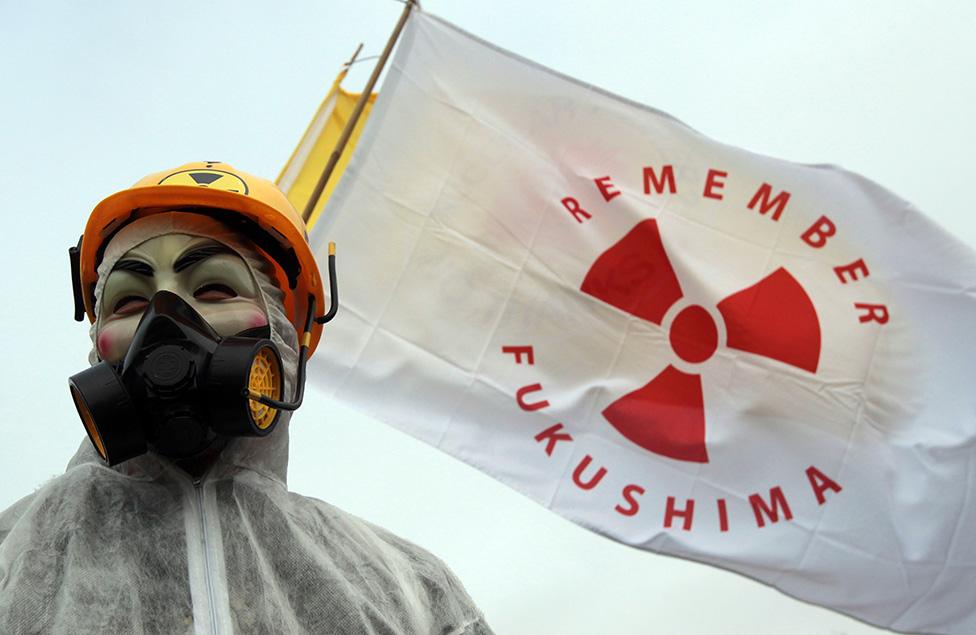
This week, Boris Johnson restated the UK government's commitment to nuclear power. But of six sites identified for replacements for the country's ageing nuclear reactors, three have now been abandoned, two are waiting approval and just one is under construction. So is it time to reassess our attitude to nuclear power?
Consider this conundrum: when you talk to climate scientists you quickly discover they are far more worried about the dangers of global warming than most of us. Some tell you privately that they have had counselling to cope with the psychological effects of knowing the world is facing an impending disaster and not enough is being done.
Meanwhile, speak to experts on the effects of ionising radiation and you find they are surprisingly relaxed about the risks low-level exposure poses to human health - certainly far less so than most people.
Despite the popular anxiety about this form of energy, it's hard to see how the UK government can meet its carbon reduction targets without new nuclear. Not least because decarbonising transport and home heating will involve a massive increase in electricity demand.
Nuclear nightmares
You only have to watch HBO's stunning drama, Chernobyl, to understand people's fears.
Who could watch the power station workers' bodies visibly breaking down as they lie in hospital and not be afraid of radiation?
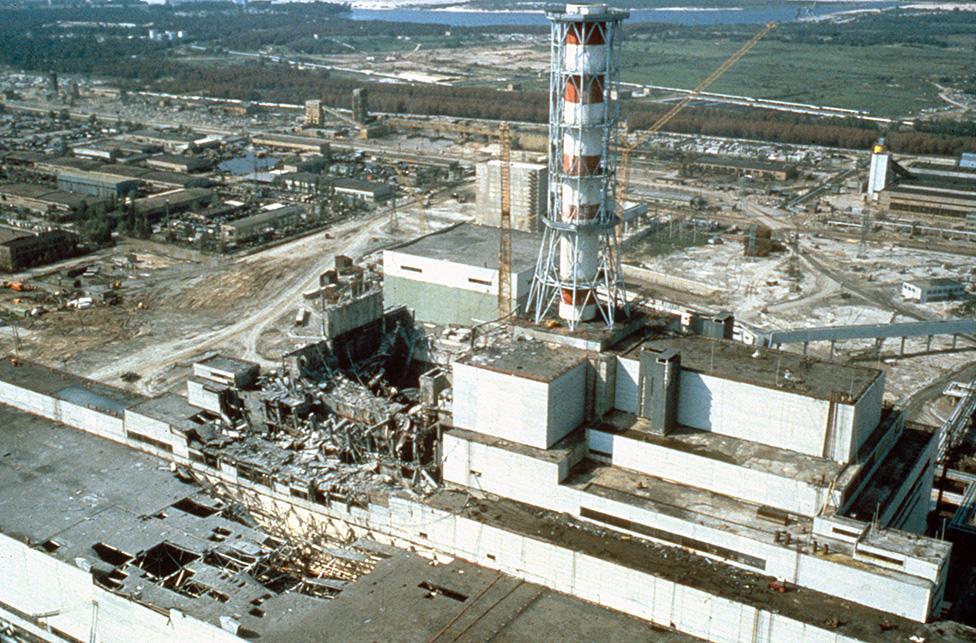
Chernobyl nuclear power plant a few weeks after the disaster in 1986
You'll be even more apprehensive if you venture down the online rabbit hole.
The estimates for the number of deaths from the Chernobyl disaster that you can encounter there quickly spiral into the hundreds of thousands.
Some studies claim, external a million people have already died because of exposure to the toxic plume that spread across Europe in the wake of the accident back in April 1986.
The real numbers
Any idea how many deaths can actually be directly linked to Chernobyl?
Brace yourself.
According to the United Nations Scientific Committee on the Effects of Atomic Radiation (UNSCEAR), 28 plant staff and emergency workers died, external as a result of radiation exposure.
There were also over 6,000 cases of thyroid cancer among people who were children or adolescents at the time of the accident. Fortunately, because thyroid cancer has a very good survival rate, as of 2005 only 15 cases had proved fatal.
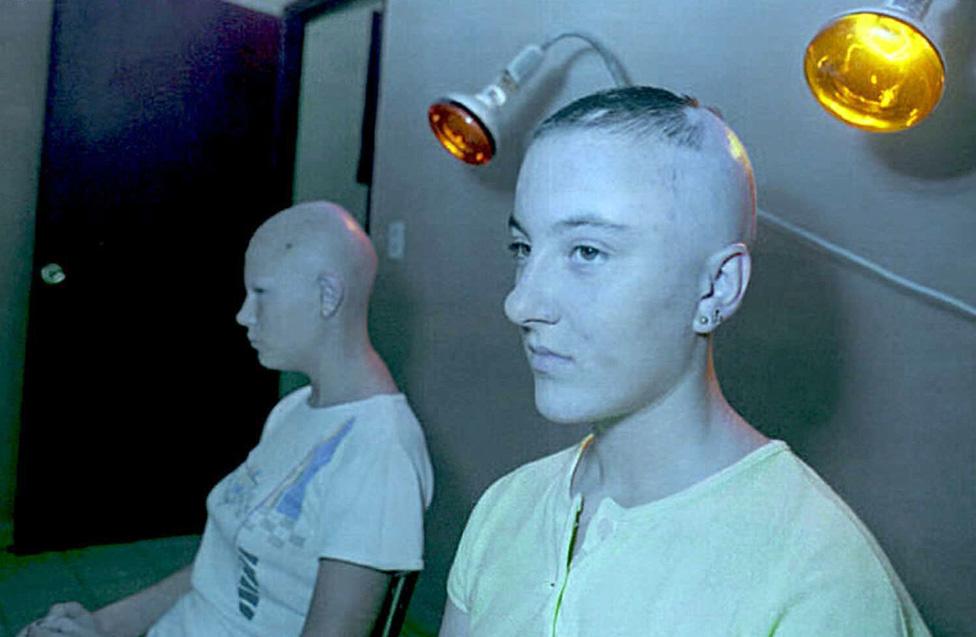
Two teenage victims of the 1986 Chernobyl nuclear disaster receive infrared radiation treatment
And these deaths were avoidable, according to UNSCEAR. It says these cancers were caused "almost entirely" by the Soviet authorities' failure to prevent people drinking milk contaminated with radioactive iodine.
But, even if we include them, according to the UN in 2005, just 43 deaths could be directly attributed to the worst nuclear disaster the world has ever seen.
The true figure for deaths that can be directly attributed to Chernobyl will ultimately be a bit higher than that, say radiation experts, but not much.
What about low-level radiation exposure?
But what about all the other people who were exposed to radiation, you are probably asking. The disaster at Chernobyl is reckoned to have produced 400 times as much radioactive material as the bombs on Hiroshima and Nagasaki combined.
Here's what the UN has to say on that: "to date, there has been no persuasive evidence of any other health effects in the general population that can be attributed to radiation exposure."
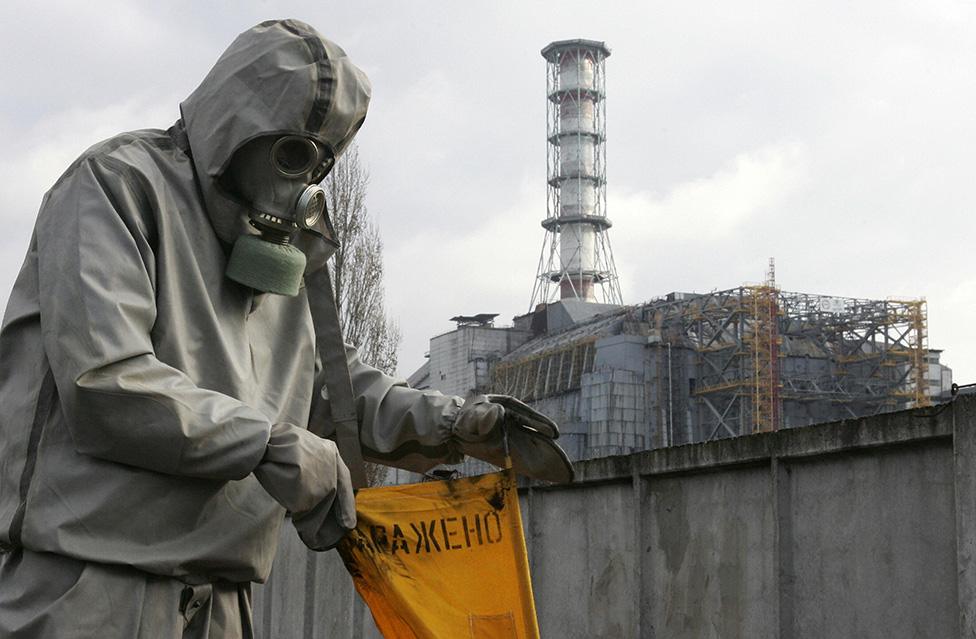
A rescue worker sets a flag signalling radioactivity in front of Chernobyl nuclear power plant during a drill
Even amongst the several hundred thousand people involved in cleaning up the area around the reactor there is "no evidence of health effects that can be attributed to radiation exposure" - apart from a small and unconfirmed increase in leukaemia and a slightly elevated incidence of cataracts.
And remember, these figures aren't from some fly-by-night operation. UNSCEAR is a UN body, part of what it calls an "unprecedented effort by the international community" to assess the health effects of the accident.
So is Chernobyl some kind of radiation outlier?
It is not, as the evidence from other nuclear incidents shows.
Let's start with the big one.
Let's go back to the moment the world woke up to the power of nuclear energy: the atomic bombs dropped on Hiroshima and Nagasaki in August 1945.
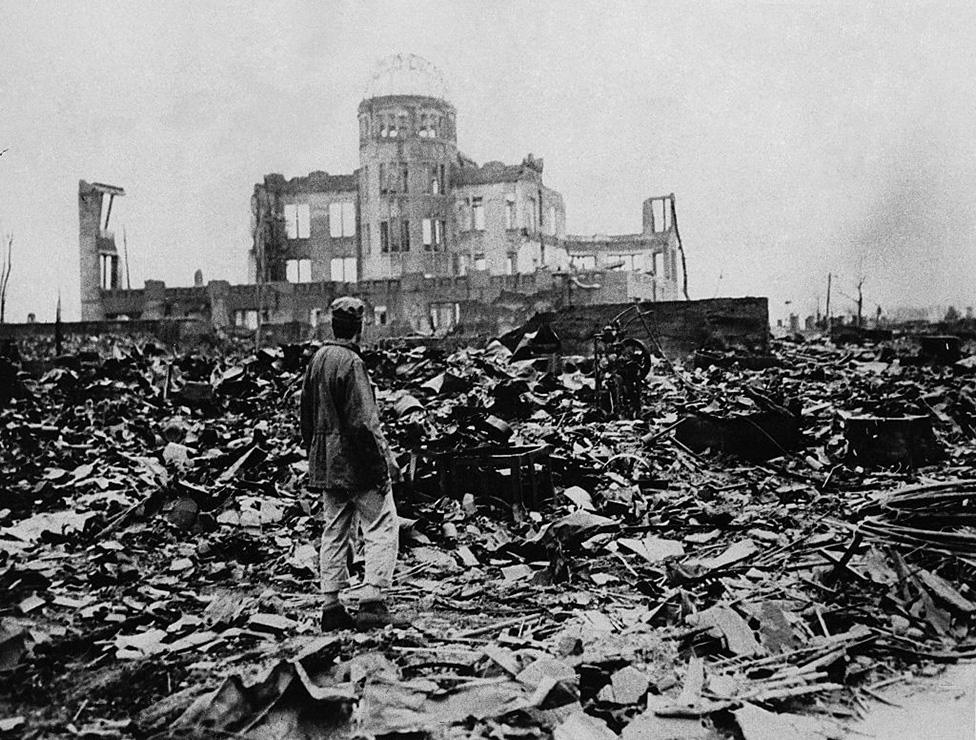
The explosions caused huge casualties - more than 200,000 people are reckoned to have been killed.
The data on these deaths isn't very reliable because of the chaos after Japan surrendered, but we do know that the majority of the victims died as a result of the physical effects of the enormous blasts and the intense heat the two bombs created.
Thousands of people were also exposed to high levels of radiation, and many of them died in the weeks immediately after the explosions.
But, just as at Chernobyl, the long-term effects of the radiation released have been far less dramatic than expected.
How do we know what effects the bombs had?
We know because, once again, there is a very thorough, international study that assessed the health effects on some 120,000 people which began in the late 1940s and continues to the present day.
Radiation experts describe it as the "gold-standard" study: by far the largest and longest-running investigation of the effects of radiation ever undertaken., external
In 2011, it concluded that 98 leukaemia deaths from the sample group could be directly attributed to radiation from the two atomic bombs. It also found that radiation had caused 853 additional other cancers over the same period. It does not say how many of these people died.
So, in 2011, there had been fewer than 1,000 deaths amongst 120,000 people they studied that are directly attributable to the long-term radiation legacy of the two atomic bombs. A far lower death toll than most people would estimate.
The nuclear disaster at Fukushima in 2011, meanwhile, is even more clear-cut. The Japanese authorities say one worker died of cancer after being exposed to radiation and another developed leukaemia while working in the clean-up operation.
UNSCEAR does not expect any discernible increase in illness among the general public, external.
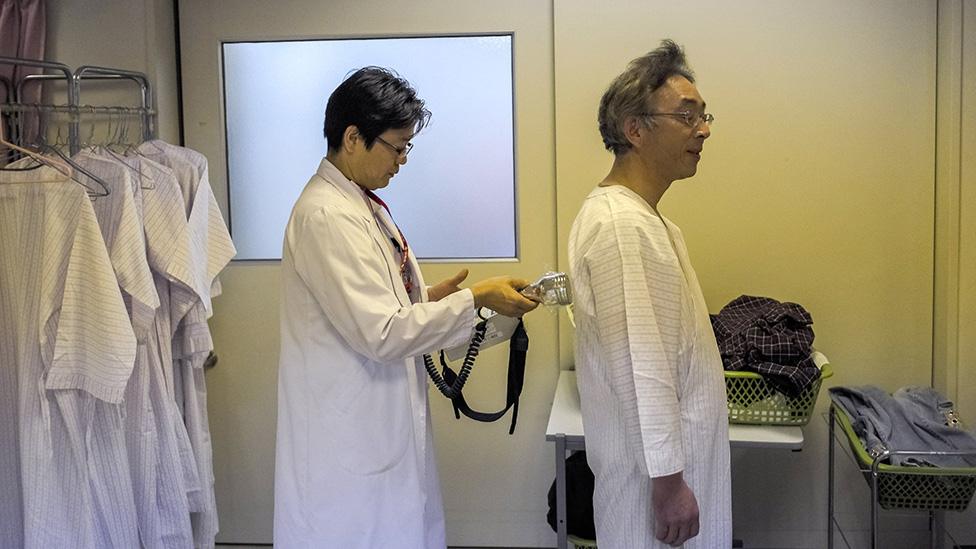
A doctor prepares a patient to be screened for radiation in Fukushima
So where do the predictions of tens of thousands of deaths come from?
The huge death tolls are estimates.
It is well established that exposure to moderate and high doses of radiation cause ill-health and can be lethal.
The figures for cancer deaths directly caused by radiation tend to be in populations exposed to these higher doses.
The uncertainty comes with low doses of radiation.
The predictions of thousands of deaths come from calculations using assumptions about the likely effects of these low doses which are then multiplied by the very large numbers of people who have been exposed.
Which makes those assumptions about the effects of radiation very important.
So, what is a low dose? That depends on how you are exposed and for how long.
But remember, we all experience radiation all the time because our world contains so many sources of radioactivity.
Virtually everything is a little bit radioactive. Sea water is slightly radioactive, so are brazil nuts, bananas and many rocks.
Our own bodies emit a tiny bit of radiation.
To put that in context this "background rate of radiation" delivers an average annual dose about 25 times what you would receive from a chest X-ray. A high dose would be many hundreds of times that.
What effect does radiation have on the body?
There are lots of different types of radiation.
Visible light is a form of radiation, so are radio waves.
The sort of radiation we are talking about here strips electrons from the atoms in our bodies. The technical term is "ionising".
When atoms in living cells are ionised one of three things happens - the cell dies, the cell repairs itself or it mutates incorrectly and may become cancerous.
So, the key question is how good our cells are at repairing themselves after radiation exposure.
This is the subject of heated debate.
At one extreme are people who say our bodies are not very good at dealing with low levels of radiation at all. They say UNSCEAR is too optimistic and predict much higher casualties from Chernobyl and other radiation incidents.
UNSCEAR follows the mainstream view. This takes as its starting point the fact that all life has evolved in a radioactive world. From this perspective, our bodies are used to dealing with low levels of radiation and the effects of low doses is therefore quite small.
At the other extreme are those who say low levels of radiation are actually good for you. There's a good discussion on the evidence of the effects of low level radiation here, external.
But you are probably wondering why can't we say for certain which of these positions is correct when it comes to low doses of radiation.
The answer is simple: the evidence isn't clear because the effects of low dose radiation are so rare they are very difficult to measure.
What does that tell us about the risks of low doses of radiation?
Well, for a start it means there are still risks.
As the UK anti-nuclear power pressure group no2nuclearpower says, "there is no such thing as an absolutely safe level of radiation: all exposures no matter how small entail some risk - even background radiation."
So, the question is how do the risks of low doses of radiation compare with other risks.
Let's start with the seminal report on Chernobyl's legacy produced by the World Health Organization (WHO), external - another very reputable body - in 2005. It predicted that some 9,000 people were likely to die from low level radiation exposure as a result of the accident.
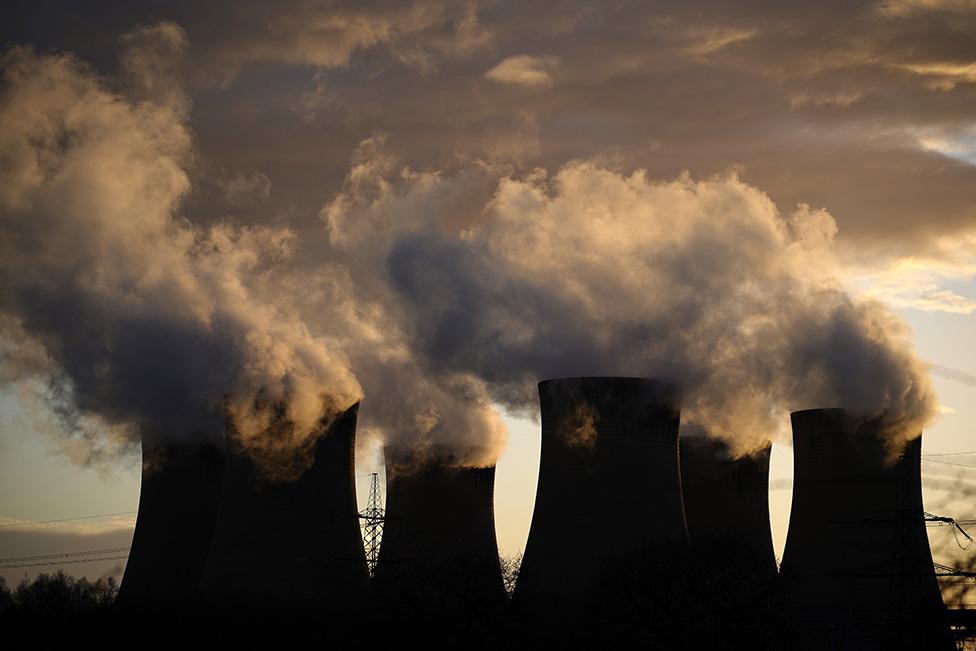
Drax Power Station is the largest power station in the UK - the owner has said that it expects to stop the use of coal in March 2021
Remember, this is an estimate of deaths. As we have seen only 43 people died of cancers that could be directly linked to radiation exposure.
Nevertheless, it is a frightening figure but we need to see it in context. These likely casualties represent a tiny fraction the almost seven million people the WHO assumes were exposed to radiation.
And remember how common cancer is. About half of people in developed nations will develop cancer during their lifetime, external; a quarter of us can expect to die from it.
The WHO says that, even amongst the 600,000 people most affected by the disaster the increase in cancer caused by radiation will be "difficult to observe" because so many people will develop other cancers.
So, when it comes to all seven million people affected by fallout from Chernobyl it should be no surprise to discover that it says there's no chance of cancers caused by the disaster being identified.
So what does this tell us about radiation?
It confirms what most radiation experts say: exposure to low levels of radiation is not a major health risk.
Don't get them wrong, they are not saying those deaths aren't important - of course they are.
But so are the other roughly 1.75 million cancer deaths we can expect amongst those affected by the disaster - the cancers caused by everything other than Chernobyl radiation.
The American Cancer Society, for example, estimates that smoking causes one out of five of all deaths in the US and we know that things like bad diet, inactivity, obesity and alcohol can also cause cancer.
What the findings of the WHO report confirm is that other factors like these pose far greatest cancer risks to us all - even those of us who had the misfortune to be exposed to low levels of radiation from Chernobyl.
What this suggests is that we should focus our efforts on tackling them, and perhaps worry a bit less about the potential effects of low levels of radiation from things like nuclear accidents.
Other concerns about nuclear power
Of course, the fear of radiation isn't the only reason people oppose nuclear power - there are worries about the proliferation of nuclear weapons and waste disposal, not to mention the huge cost of building new nuclear power stations and then decommissioning them.
But here's the thing: if we were a bit less concerned about the risks of low levels of radiation then maybe we could make a more balanced assessment of nuclear power.
Especially given that coal-fired power stations routinely release more radioactivity into the environment, external than nuclear power stations, thanks to the traces of uranium and thorium found in coal. , external
And, since we are talking about worrying about the right things, let's not forget the environment.
Taking a more balanced view on the risks of radiation might help all those anxious climate scientists I mentioned at the start of this piece sleep a bit easier in their beds at night.
Follow Justin on Twitter., external


I've travelled all over the world for the BBC and seen evidence of environmental damage and climate change everywhere. It's the biggest challenge humanity has ever faced. Tackling it means changing how we do virtually everything. We are right to be anxious and afraid at the prospect, but I reckon we should also see this as a thrilling story of exploration, and I'm delighted to have been given the chance of a ringside seat as chief environment correspondent.

